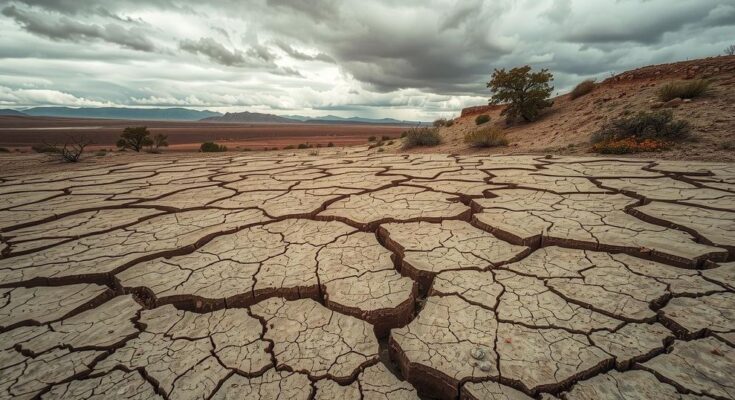Minister Nizar Baraka declared that despite recent rainfall improvements, Morocco continues to grapple with structural drought. He noted significant effects of rainfall on various water resources and infrastructure. While drought levels have moderately decreased, certain regions remain affected, necessitating the acceleration of water resource management initiatives. The nation’s dam storage capacity is set to reach 26 billion cubic meters by 2030.
Nizar Baraka, the Minister of Equipment and Water, addressed the ongoing drought situation in Morocco amidst recent rainfall and snowfall, indicating that the country remains entrenched in a structural drought crisis despite notable improvements. Speaking during the program “Nokta Ila As-Satr” on Al-Aoula channel, he affirmed a reduction in drought intensity, highlighting the positive impacts of the recent precipitation.
The Minister elaborated on the effects of the recent rainfall on various sectors, stating that dam reservoirs, potable water supplies, groundwater levels, and agriculture have seen significant benefits. Notably, regions such as Chefchaouen, Taza, and Taounate recorded over 300 millimeters of rainfall, while Rabat and Beni Mellal recorded more than 170 millimeters, with snowfall covering 11,000 square kilometers, marking a clear improvement from last year.
Baraka disclosed that current water storage in dams stands at 6 billion cubic meters, surpassing 35% of total capacity, with an impressive filling of 1.4 billion cubic meters achieved in the previous ten days. He noted that four primary water basins—Loukkos, Tensift, Oum Er-Rbia, and Moulouya—have also exceeded the 50% storage capacity.
The Minister mentioned that Morocco is currently experiencing moderate drought, reduced by 18% compared to the annual average. However, regions such as Tensift, Souss, and southern provinces still face drought conditions, while areas like Oued Noun, Ziz, and Ghriss have recovered from severe drought. He assured that these advancements would secure drinking water supplies in cities like Errachidia and Zagora, with resources lasting up to three and two years, respectively.
Despite the progress, Baraka underscored the importance of hastening the execution of royal directives on effective water resource management, emphasizing rainwater storage through dams to safeguard populations against flooding. He shared that the dam construction timeline has been shortened to 6 months to 3 years.
In conclusion, Baraka stated that Morocco’s total dam storage capacity has reached 20 billion cubic meters, with 6 billion cubic meters currently stored due to the recent rains, anticipating an increase to 26 billion cubic meters by the year 2030.
In summary, Minister Nizar Baraka’s remarks emphasize that while recent rainfall has brought improvements to Morocco’s drought situation, challenges remain in certain regions. The nation is making progress in water resource management, with significant storage in dams reflecting the positive impact of the rains. Continued efforts are necessary to optimize water resources and address the ongoing drought across various provinces, ensuring a sustainable supply for the future.
Original Source: fesnews.media




